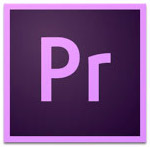 I got an interesting email earlier this week from Philip asking what audio levels to use when setting music under a narrator. The answer is that there’s no perfect level; for instance a full orchestra would be set differently than a solo flute.
I got an interesting email earlier this week from Philip asking what audio levels to use when setting music under a narrator. The answer is that there’s no perfect level; for instance a full orchestra would be set differently than a solo flute.
However, in many cases, it isn’t an issue of levels; it’s an issue of frequencies. In this article, I’ll illustrate how to adjust this in Final Cut Pro X, Premiere Pro CC, and Adobe Audition.
BACKGROUND
Well-recorded and well-mixed music fills the full range of frequencies that we can perceive: 20 – 20,000 Hz. Human speech, however, uses only a subset of those frequencies. Male voices are roughly 200 – 6,500 Hz, while female voices are roughly 400 – 8,000. Children’s voices range up to around 12,000 Hz.
We need to hear the narrator to understand what’s being explained. But we also need to hear the music, because its driving the viewer’s emotions. However, we can’t keep both voice and music equally loud because then the audio becomes completely unintelligible.
The Channel EQ filter (also called an “EQ” or “Graphics Equalizer” filter) allows us to take advantage of these differences in frequencies to keep key music frequencies nice and loud, while reducing music frequencies that interfere with the narrator’s voice.
ProTools, Adobe Audition, Adobe Premiere and Final Cut Pro X all have variations on the Channel EQ filter. And, while the name and interface are different between them, they all work the same way. In all cases, the Channel EQ filter is applied to the music clip.
NOTE: For more complex mixes, the Channel EQ filter can be applied to a compound clip, nest, or submix; depending upon the software you are using. The operation of the filter, however, is the same.
 CHANNEL EQ IN FINAL CUT PRO X
CHANNEL EQ IN FINAL CUT PRO X

Here’s a typical example: a narration clip placed above a music clip.

Open the Effects Browser, select the Audio EQ category and drag the Channel EQ effect on top of the music clip.

Select the music clip, open the Inspector, and click the small icon to the right of the text “Channel EQ”.

This opens the Channel EQ window.

While settings will vary for each speaker, here are my suggested settings for a male narrator. (Note the settings in the second and fourth columns.)

And here are my suggested settings for a female narrator. (Note the differences in settings in the second and fourth columns.)
NOTE: These settings will get you close. Adjust the low frequencies to make vowels clearer. Adjust high frequencies to make diction clearer.
 CHANNEL EQ IN PREMIERE PRO CC
CHANNEL EQ IN PREMIERE PRO CC

Let’s try the same thing in Adobe Premiere; though the filter has a different name and look. Here’s the same sequence.

Drag the EQ filter from the Effects panel > Audio Effects on top of the music clip.

Select the music clip, then, in the Effect Controls panel, twirl down the right-pointing arrow next to EQ and click the Edit text button. (This filter isn’t a channel filter, but its as close as Premiere allows us to get.)

Here are my suggested settings for a male narrator. Be sure to check both Mid 1 and Mid 2 to enable the channel. Note the settings for Freq., Gain, and Q. (Q is especially important.)

Here are my suggested settings for a female narrator. Be sure to check both Mid 1 and Mid 2 to enable the channel. Note the settings for Freq., Gain, and Q.
 CHANNEL EQ IN AUDITION
CHANNEL EQ IN AUDITION
Audition has, not surprisingly, better EQ filters with a more intuitive interface than Premiere. In Audition, the filter is called a “Graphics Equalizer;” with options for 10, 20 and 30 bands. While any of these would work. I prefer the 20-band version.
Effects are applied to the track containing the music.

Here are my suggested settings for a male narrator using the 20-band graphics equalizer. Notice that the starting (250) and ending (2.8k) faders have a setting of -4, allowing a smoother ramp into the effect.

Here are my suggested settings for a female narrator using the 20-channel graphics equalizer. Notice that the starting (355) and ending (4k) faders have a setting of -4, allowing a smoother ramp into the effect; but, for women, this starts one channel higher than for men.
NOTE: Given my choice, I would prefer to use the graphics equalizer in Audition than the EQ filter in Premiere.
SUMMARY
The benefit to using a channel EQ is that you can retain the power of music frequencies lower than a human voice; think drums and bass guitar, while still keeping voice frequencies in the music lower so that the narrator is clearly audible.
Play with these settings, and find the frequencies that work the best for your narrators.
2 Responses to Channel EQ Makes Narration Sound Great
Very useful info, thank you for sharing!
[…] Channel EQ settings for audio […]